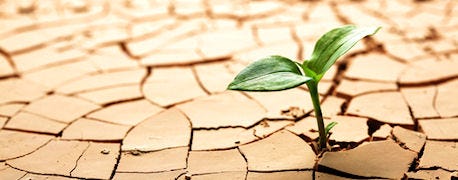September 11, 2012

The drought is worse in some South Dakota counties than during the Dust Bowl years, says Dennis Todey, South Dakota state climatologist.
"While temperatures were generally just short of Dust Bowl records, precipitation records did beat many from the 1930s," he says.
The following stations in South Dakota will likely set all-time records for lack of summer precipitation in the following cities (this summer's precipitation, followed by the previous record low precipitation and the year it occurred):

Drought Worse Than Dust Bowl Years For Some In S.D.
Vermillion 1.62 3.68 (1931)
Yankton 1.76 2.79 (1970)
Centerville 2.30 3.56 (1931)
Sturgis 2.69 3.00 (2006)
Sioux Falls 2.73 3.55 (1894)
Marion 2.98 4.15 (1976)
Winner 3.09 3.35 (1970)
Menno 3.54 4.14 (1910)
White Lake 3.54 2.99 (1988) 3rd
Academy 3.56 3.51 (1976) 2nd
Mitchell 3.75 3.48 (1991) 2nd
Clear Lake 5.74 4.56 (1973) 3rd
Menno 77.1 79.4 (1936) 3rd
Belle Fourche 76.3 74.4 (2006)
Milesville 75.6 76.3 (2006) 4th
Sioux Falls 75.2 77.1 (1936) 3rd
Martin 74.9 73.9 (2006)
Oelrichs 74.4 77.6 (1936) 5th
Sturgis 74.1 75.3 (1988) 5th
Lemmon 72.8 75.7 (1936) 5th
Newell 72.5 74.9 (1936) 5th
"The agricultural impacts for the summer are huge," Todey says. "From corn yield losses and pasture and range areas. Given the numbers listed above it is obvious as to why yields were impacted so severely this year."
When reviewing the data, Todey says it is interesting to see that many precipitation records are not from some of the typical drought years.
"When we think of more recent drought years, we typically think of 1976, 1988 and 2006. These years appear in some records. But several others such as 1931 and 1970 hold previous precipitation records," he said. "The temperature record standard is still 1936, holding most of the summer records in South Dakota."
SDSU Extension will provide weekly drought briefings throughout the 2012 growing season. To keep up to date on how the drought is impacting South Dakota's agriculture industry, visit iGrow.org.
Source: SDSU
You May Also Like




